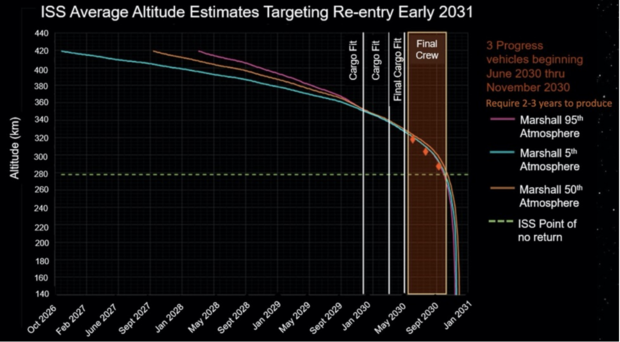NASA said that it plans to retire the International Space Station in 2031 by crashing it into the Pacific Ocean. Phil McAlister, director of commercial space at NASA Headquarters, said in a press release that the private sector will be taking the lead on space travel in the future and that NASA will help ensure a smooth transition.
“The private sector is technically and financially capable of developing and operating commercial low-Earth orbit destinations, with NASA’s assistance,” he said. “We look forward to sharing our lessons learned and operations experience with the private sector to help them develop safe, reliable, and cost-effective destinations in space.”
NASA’s aim is to use the commercial ventures to purchase the goods and services that the agency needs, instead of providing all of their own services.
In the transition report included in the press release, NASA said it plans to “de-orbit” the ISS over an uninhabited part of the South Pacific Ocean called Point Nemo. It will begin to head back towards Earth in October 2026, and crash at Point Nemo in January 2031. The horsepower of three Russian Progress spacecraft will be required to pull it out of orbit.
NASA
The station, which launched in 1998, has hosted astronauts from 19 countries in their scientific ventures. The ISS has traveled 227 nautical miles in orbit above Earth during its more than two decades in space.
In its announcement, NASA highlighted the Biden administration’s commitment to keeping the station open for the next decade, writing that the station is “busier than ever” with crews onboard “advancing the technologies and procedures that will be necessary to send the first woman and first person of color to the Moon and the first humans to Mars.”
NASA added that it would encourage and incentivize commercial companies that overtake space duties in 2031 to reach out to students.
“The future of NASA’s missions, to the Moon, Mars, and beyond, rely on the younger generation. Today’s youth are tomorrow’s Moon and Mars explorers. Today’s youth are tomorrow’s scientists, engineers, and researchers,” NASA wrote.
Download our Free App
For Breaking News & Analysis Download the Free CBS News app
